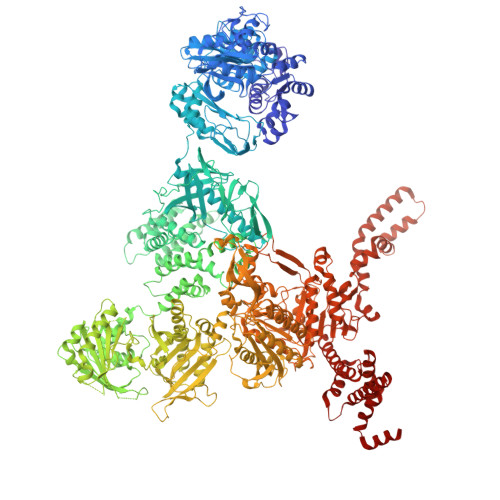Filament structures unveil the dynamic organization of human acetyl-CoA carboxylase.
Zhou, F., Zhang, Y., Zhu, Y., Zhou, Q., Shi, Y., Hu, Q.(2024) Sci Adv 10: eado4880-eado4880
- PubMed: 39383219
- DOI: https://doi.org/10.1126/sciadv.ado4880
- Primary Citation of Related Structures:
8XKZ, 8XL0, 8XL1, 8XL2 - PubMed Abstract:
Human acetyl-coenzyme A (CoA) carboxylases (ACCs) catalyze the carboxylation of acetyl-CoA, which is the rate-limiting step in fatty acid synthesis. The molecular mechanism underlying the dynamic organization of ACCs is largely unknown. Here, we determined the cryo-electron microscopy (EM) structure of human ACC1 in its inactive state, which forms a unique filament structure and is in complex with acetyl-CoA. We also determined the cryo-EM structure of human ACC1 activated by dephosphorylation and citrate treatment, at a resolution of 2.55 Å. Notably, the covalently linked biotin binds to a site that is distant from the acetyl-CoA binding site when acetyl-CoA is absent, suggesting a potential coordination between biotin binding and acetyl-CoA binding. These findings provide insights into the structural dynamics and regulatory mechanisms of human ACCs.
Organizational Affiliation:
College of Life Sciences, Zhejiang University, Hangzhou 310058, China.















